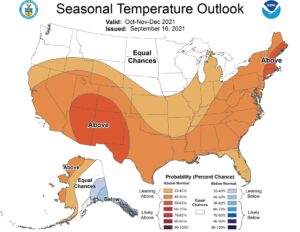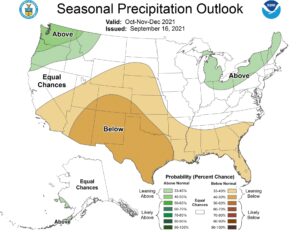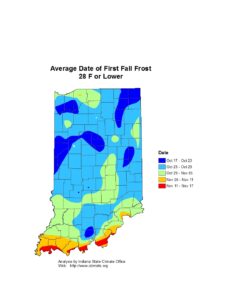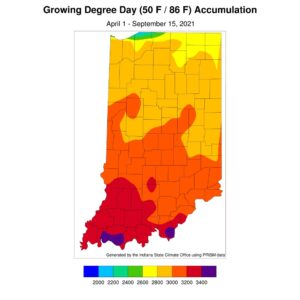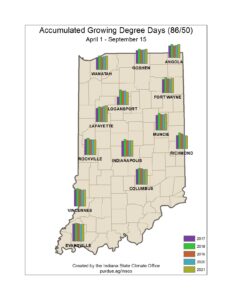Last winter, earth was in a La Niña phase. While the relationships between El Niño – Southern Oscillation (ENSO) phases and Midwest climate are not strong, historically the La Niña phase has been weakly associated with milder and wetter winters. Timing is everything, though, and winters are climatologically defined as December, January, and February. When that 3-month season is broken down further during La Niña events, this tends to favor and milder (i.e., warmer and drier than normal) December and early January and more active (i.e., snowier and colder than normal) late January and February. The 2020-2021 winter seemed to follow this pattern where the greatest snowfall events occurred in February, December and January were warmer than normal, and February ended up being significantly colder than normal. Will the 2021-2022 winter season be the same? While a La Niña is predicted to peak sometime around November or December, most models have its strength being relatively weak. This suggest much more uncertainty on whether or not classic La Niña impacts will prevail again this winter. We will just have to wait and see.
The most recent climate outlooks for the October through December period is slightly favoring above-normal temperatures (Figure 1) with equal chances for above-normal, below-normal, or normal precipitation across Indiana (Figure 2). The climate outlooks for October are more strongly favoring above-normal temperatures across the state with precipitation being only slightly favored for the northeastern part of the state. The rest of Indiana’s precipitation outlook was too uncertain to favor either above- or below-normal conditions. Given these outlooks, it may be tempting to assume that the first hard freeze will be late this year. However, short-lived, yet damaging freeze events can pass through and not be picked up in the longer period climate outlooks. Therefore, at this point it is too uncertain when the first hard freeze event will occur. Figure 3 illustrates the average date of the first hard freeze (28°F) across Indiana.
Accumulated modified growing degree-days (MGDDs) for April 1 through September 15, 2021 range from around 2700 units in northern Indiana to around 3400 units in southern Indiana (Figure 4). This is slightly ahead of climatological normal accumulations for the northern two-thirds of the state and slightly behind in the southern part of the state. Figure 5 compares this year’s accumulated MGDDs to recent years.
